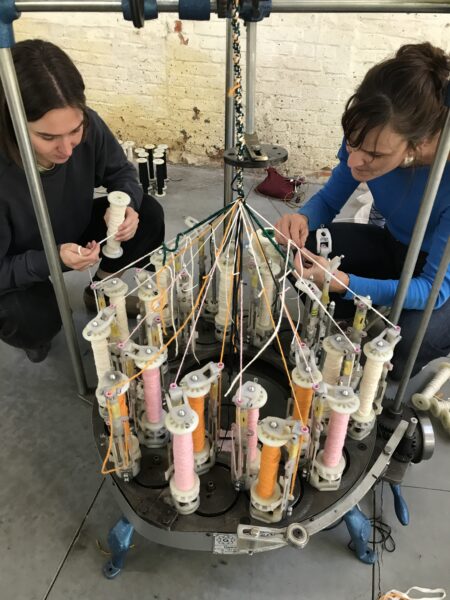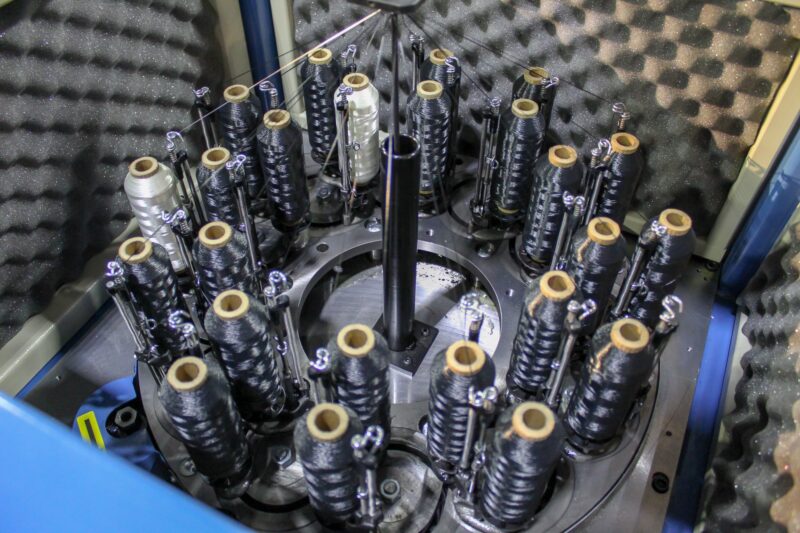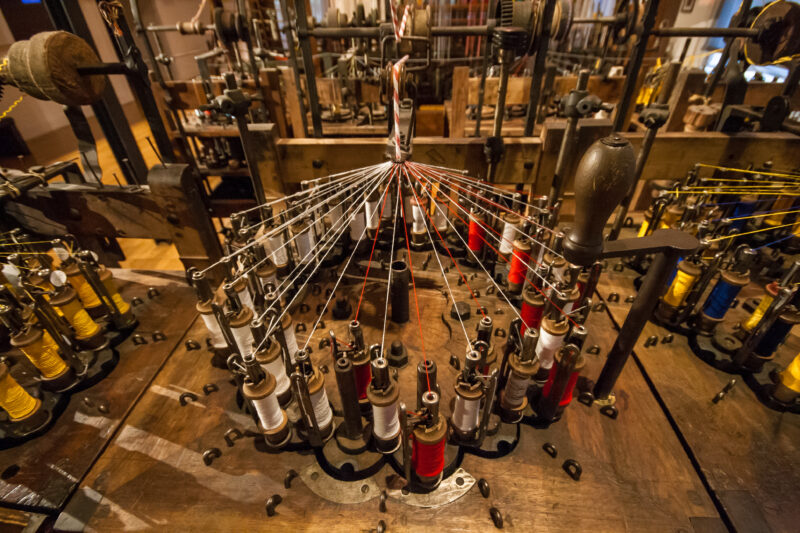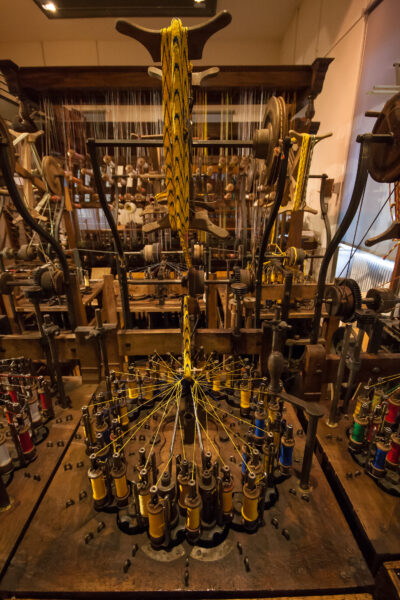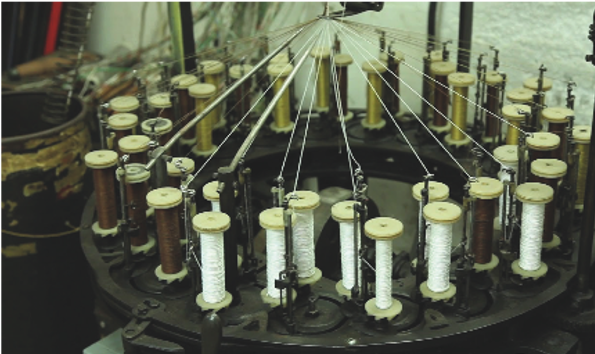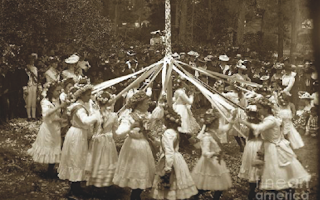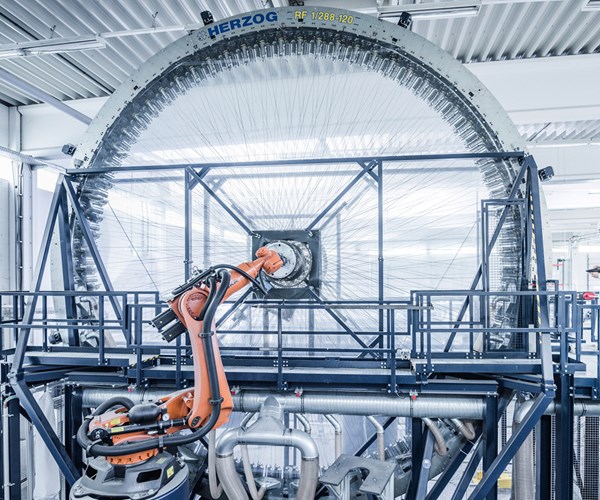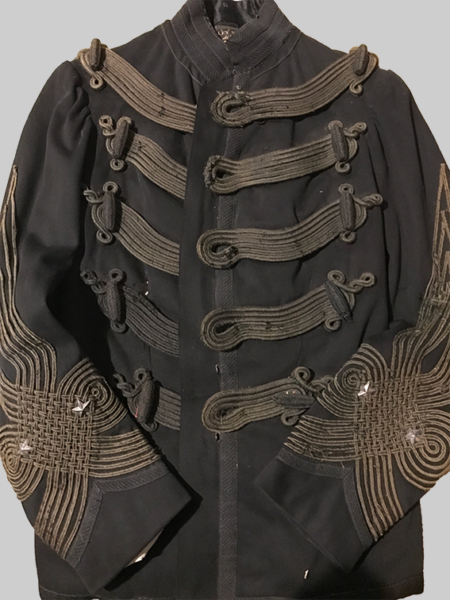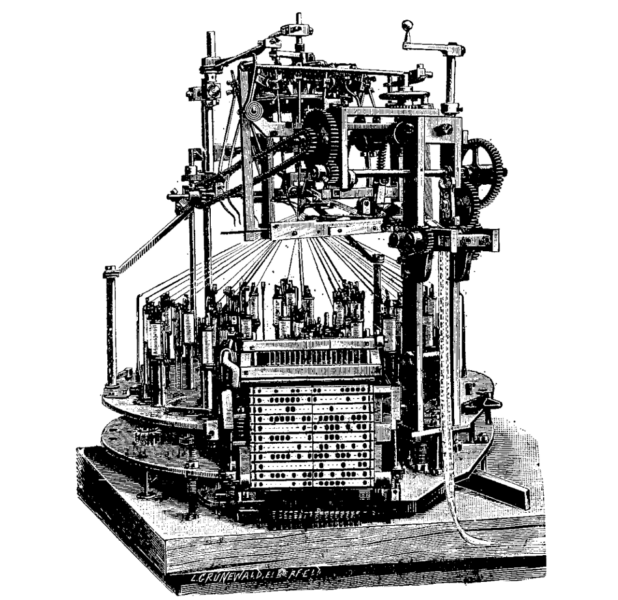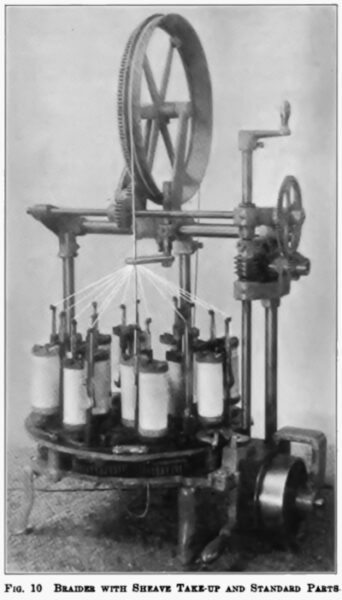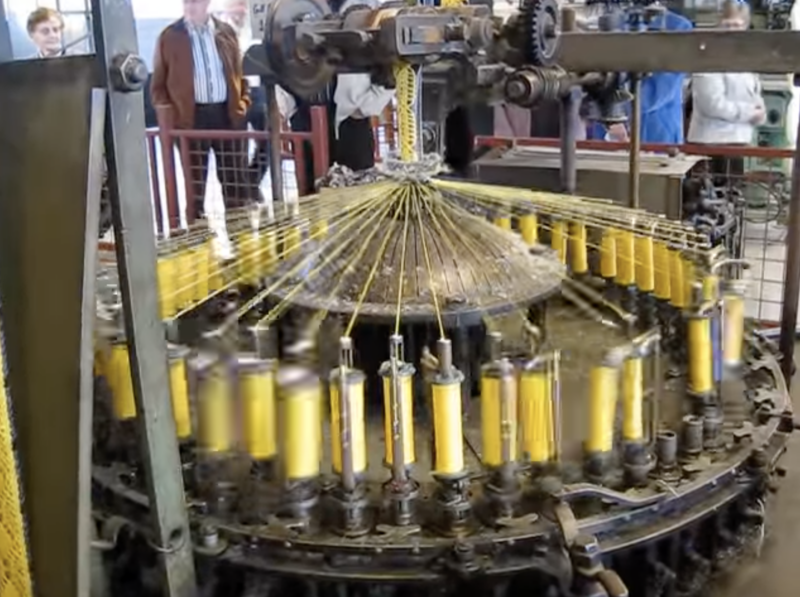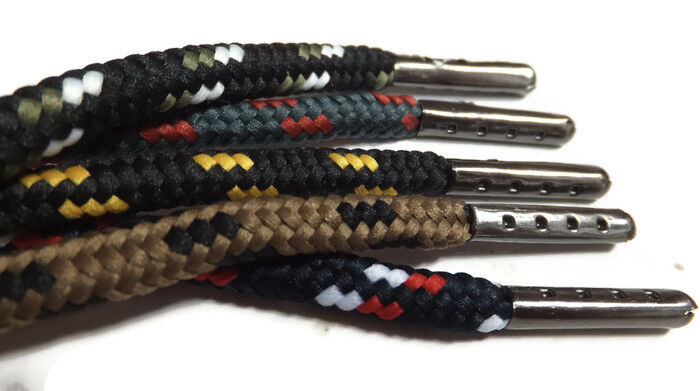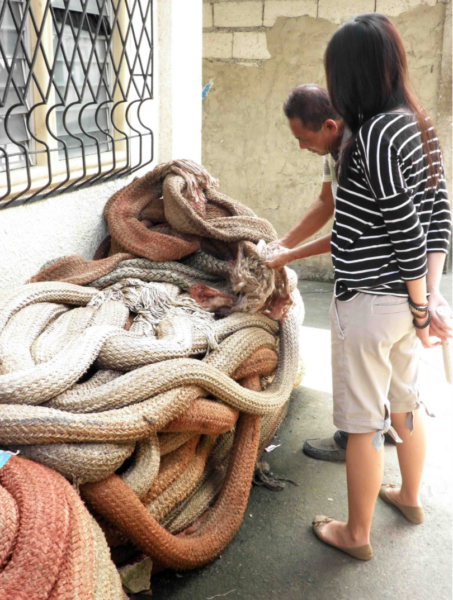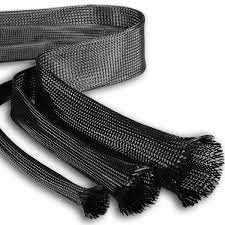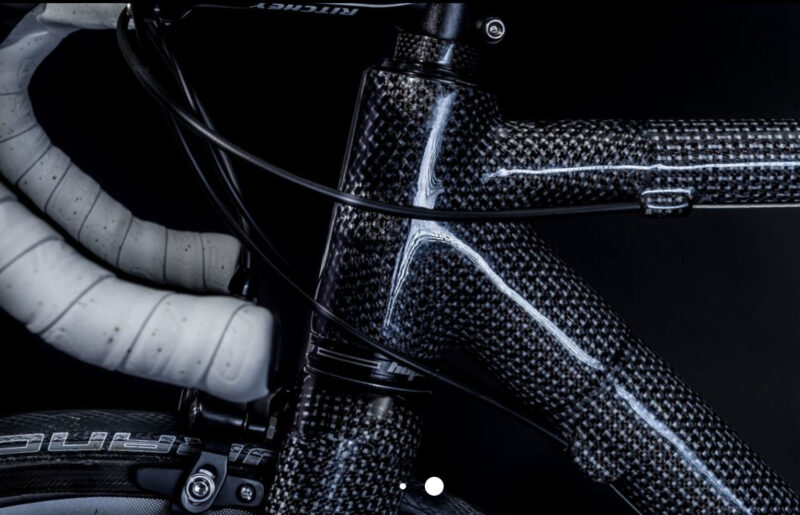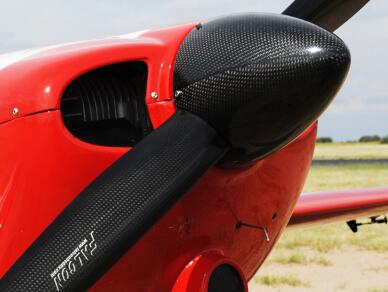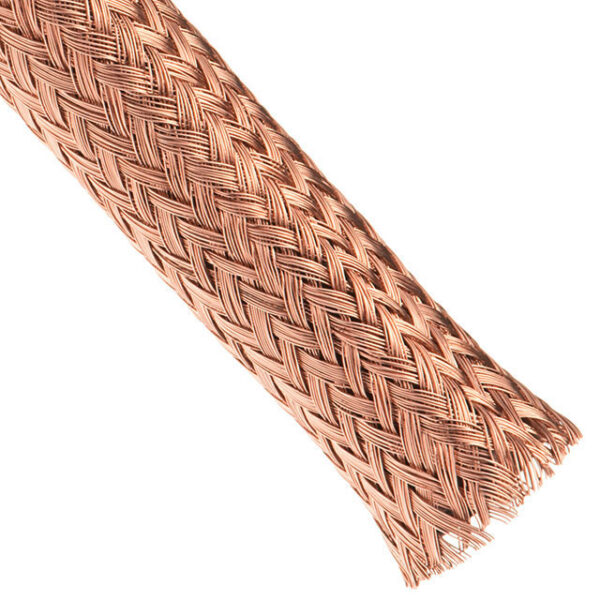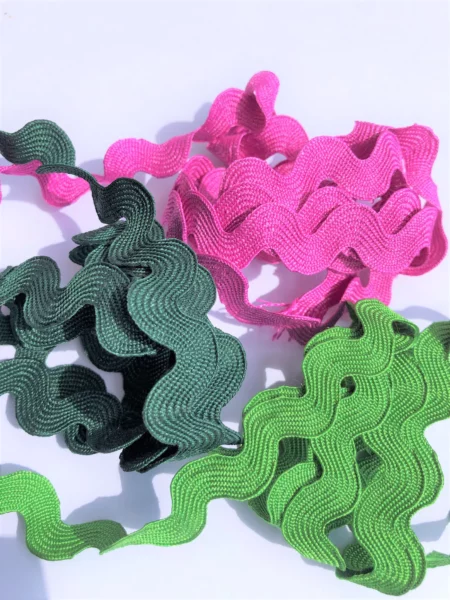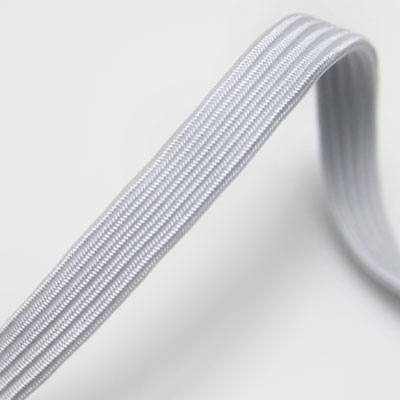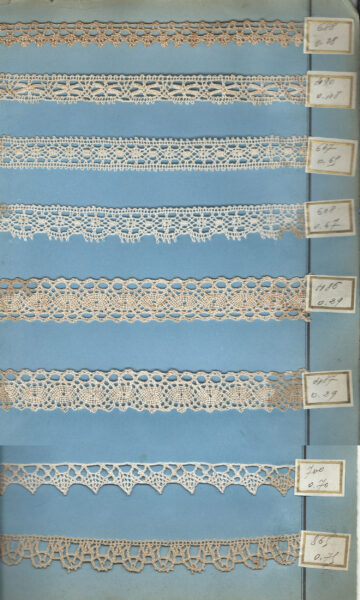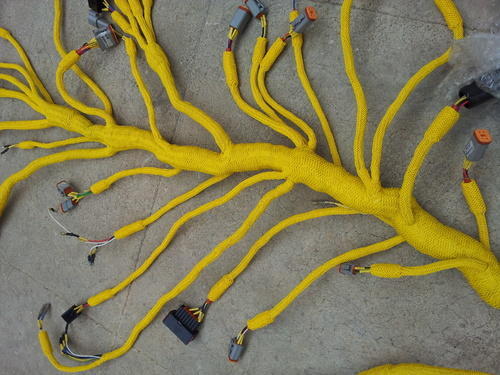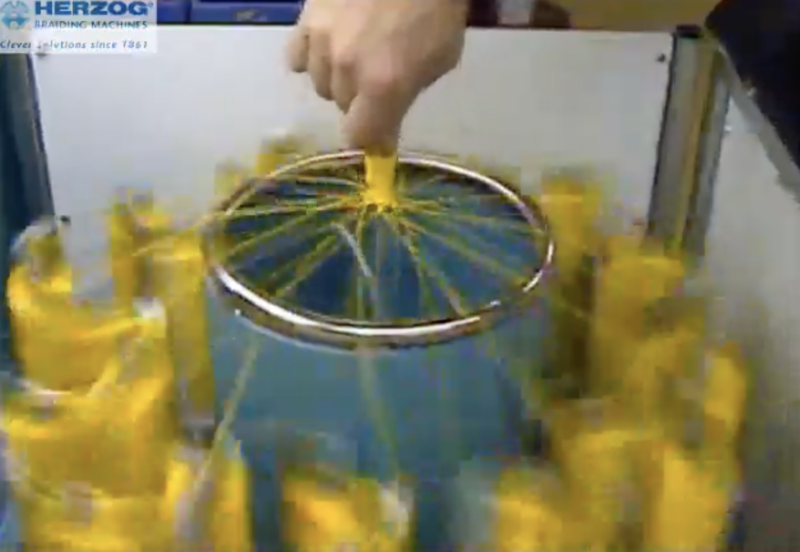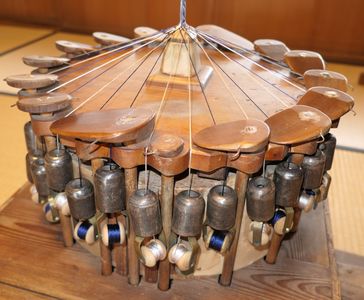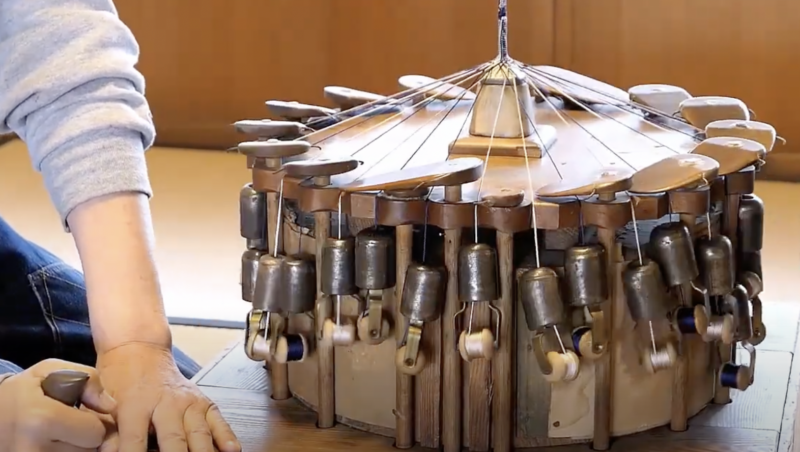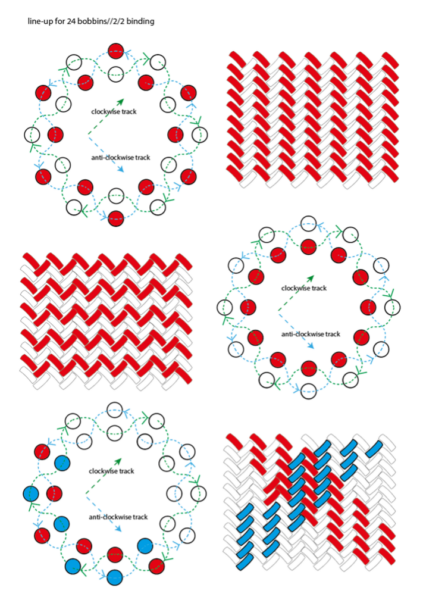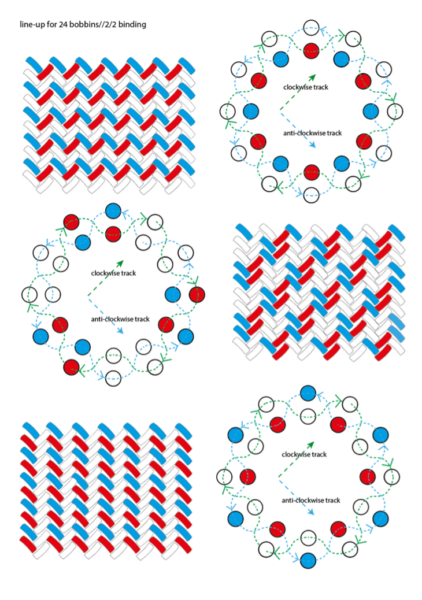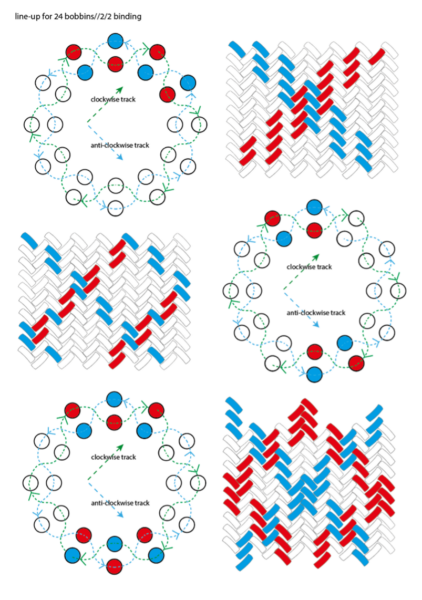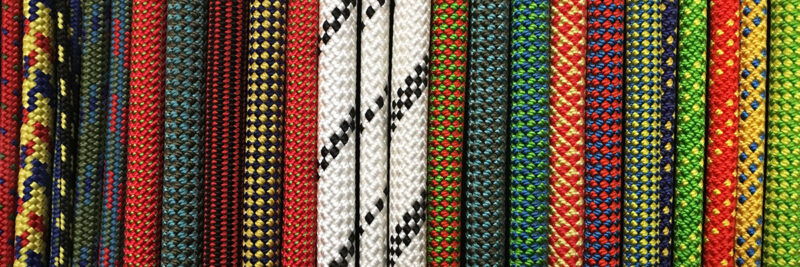maypole braiding
SOFT TOOLS / Crossing
Although most people don’t know, we are surrounded by braided items such as ropes, electric wires or shoelaces. Even bicycle frames and propellers for airplanes can be braided nowadays. Typical for maypole braiding are the bobbins following a track defined by a trackpad. If you compare a two-hundred-year-old braider with a giant contemporary carbon braider, the movement of the bobbins dancing away in opposite directions is still the same. At a time when zippers and snaps did not exist and buttons were very expensive, the maypole braiding machines were developed to make strings for military decoration, laces to close (under)garments and shoes. During the eighteenth century, both Wupperthal in Germany and Saint-Etienne in France became famous braiding centers, which is still reflected in their museum collections.
Maypole braiding marks the inspirational start of Soft Connection Lab. The striking similarity between the maypole dance and the braiding machine – the movement of the bobbins is identical to the one of the dancers around the maypole tree – triggered the team’s curiosity. We wondered if the technique that was inspired by a dance could in turn become a connective making performance. Soft Connection Lab decided to broaden the scope towards other traditional braiding techniques, to research their potential for making practices and healing artifacts. We want to revive their associations and functions, and share their historical, cultural, technical, social and systemic layers as an inspirational starting point via amongst others this platform.
The strongest obstacle in our research was the disposal of maypole braiders. As they are strictly used in an industrial context, there are no models for small textile designer studios or schools, contrary to hand weaving looms or knitting machines. That’s why we bought some semi-automatic machines in the Indian town Ahmedabad. By customizing our flat and tubular maypole braiders, we wanted to make them as versatile as possible. Besides we’ve also built a human-sized maypole braider. You can read more about this experiment in the Trial&Error-article Exploring the human-sized braider. To conquer some of the challenges that we’ve experienced during this first experiment, we researched the translation of the maypole 2/2 binding on a simple kumihimo disk. This allows to experiment with patterns and shapes without the need for a machine. During our journey, we’ve further developed this versatile tool.
Roots
The technique owes its name to the resemblance with the maypole dance: two groups of dancers, all holding a ribbon, move in opposite directions and create, doing so, a braid around a maypole. Both in antique and hi-tech carbon braiders, you’ll easily recognize this basic movement. Especially the round and most common braiding type is the one that identically memes the dancers, moving in two circles and opposite directions.
At a time when zippers and snaps did not exist and buttons were very expensive, the maypole braiding machines were developed to make strings for military decoration, laces to close (under)garments and shoes. The first, though very vague account of a braiding machine appears in an English patent applied for in 1748 by Thomas Walford. Shortly after, in 1767, a perfectly functioning machine was demonstrated in the German town Barmen. It marked the start of the development of a flourishing industry in Wupperthal. Besides, initiator Johan Heinrich Bockmuhl is also often credited for the first use of iron instead of wood for machine construction. Afterwards, the Frenchman Perrault introduced an altered, modified version in Saint-Etienne near Lyon. This would also become an important braiding center.
Following trends
The huge demand for textile braided covers on electric, telephonic, and telegraphic wires at the end of the nineteenth century caused a steep development of maypole braiders. All over Europe and the United States, numerous manufacturing plants were built. Besides, fashion trends stimulated the rose and sank of more specific braiders with a mainly decorative use, such as flat ribbon or soutache braiders.
The same counts for the bobbin lace braider, which was developed at the end of the eighteenth century to meet the high demand for lace ribbons at the time. The new loom could weave faster and more evenly than traditional manual methods. Wooden perforated cards, called ‘jacquards’, were used to guide the movements of the bobbins, enabling manufacturers to produce more complex patterns quicker than ever before. Some patents of this type of maypole braider date from the beginning of the twentieth century. It made it possible to create lace ribbons on a huge, complicated jacquard drive type of machine. Although it’s hard to imagine, lace ribbons and ropes are both made on maypole braiders.
Witnesses from the past
The former centers of the braiding industry – Wupperthal in Germany and Saint-Etienne in France – still host fine museums where antique braiders can be seen at work. In Wupperthal, the Ribbon Weaving Museum is worth a visit, while in Saint-Etienne the Museum of Art and Industry is the place to be. In Belgium, you can visit the Ribbon Museum in Comines. It houses amongst others a rare variation of the maypole braider; it makes a combined flat and round ribbon which was used to bind old style books.
Traditional applications
In our daily life, we are surrounded by braided items such as ropes, shoelaces or the string of a hoodie. On a bigger scale, car wheels, bicycle frames and propellers for airplanes can be braided. As most people associate the products with weaving or knitting, as these techniques are better known, Soft Connection Lab wants to put braiding in general, and maypole braiding in particular, in the spotlight. We want to revive their associations and functions, and share their historical, cultural, technical, social and systemic layers as an inspirational starting point.
Made on the original (round)braiding machine
Although most of us don’t know, we all use braided textile items daily. They come in all sizes: from small shoelaces or strings for hoodies over sailing and climbing ropes to giant man-sized deep mooring ropes. As the structure looks like a diagonal weave, braiding is sometimes called diagonal weaving. But, in fact, the way they are made is more related to braiding hair than to weaving.
These examples are made on the round maypole braider. As it was the one inspired by the maypole dancers, we can refer to this one as the original maypole braider.
Made on maypole braiders with unconventional materials
Some items are braided by giant machines, while you would never expect it. Examples include car wheels, bicycle frames and propellers for airplanes. They are braided in carbon fiber and afterwards stiffened with resin. While they are stronger than steel, they are a lot lighter. Despite the hi-tech aspect of carbon braiders, the movement of the bobbins is still identical to the one of the dancers around the maypole.
Another inspiring material which is braided, is metal thread. The metal sleeves are used for applications that need to be cut and need to be abrasion resistant.
Made on special machines
Many flat ribbons are made on a maypole braider which looks like the round braider. The only difference is that the track is interrupted and has the shape of a horseshoe. Some examples include serpentine ribbons and elastic ribbons.
A very special variant is the bobbin lace braider. As the demand for lace rose in close relation to the fashion trends, a quite complicated braiding machine with a jacquard selection system was developed. Included small lace strips are braided on very large maypole type braider, with diameters going up to 2 meters.
A harness braider looks like a standard maypole braider, but has a “bucket” in the middle, and the braiding goes both ways, up and down, guided by hand. It is used to braid wire, such as for airplanes, trucks and construction equipment.
A little, strange Japanese brother
Something noteworthy from the other side of the world, is the Naiki-dai or Japanese braiding machine invented by kumihimo artisans. The word Naiki refers to a special rank in the Samurai class. Dai means, as always, stand. The origins of this semi-automatic braiding machine are veiled in secrecy, so it’s hard to know more about its history. The machine was created and produced by the textile artisans themselves, fearing the effects of the industrial revolution. It was their way to compete with the imported goods and machines.
Watch & learn
Patterns on maypole braids are made by positioning the bobbins in a certain order. This video gives a first insight into the machine. On our diagrams there are 24 bobbins, which means two circles of twelve bobbins moving in opposite directions. Marking both tracks with different colors helps to understand the process. Also managing a braider slowly by hand helps to understand the movement. The next step in being able to read the schedule, is to imagine looking at the braider from above. The openings of the bobbins are represented by dots.
Pattern sheets
On the included pattern sheets, you find pairs of a round and rectangular diagram.
The round diagrams represent the position of the bobbins on a 24 bobbins maypole braider, set up for the standard 2/2 binding, which is for example used for covering up electric cables. Although the 1/1 or 1/2 bindings are also possible.
The rectangular diagram shows the corresponding pattern. To be able to read this diagram, imagine cutting up a part of the round braid and flattening the swatch. It is important to look at the track indication in the round diagram and recognize this track on the flat diagram. The way both tracks cross diagonally, creates the pattern.
The diagrams can be used both ways: to see which pattern you create with a certain bobbin set-up or to draw the pattern on the rectangular diagram and translate it to a bobbin set-up. If you print the blank pdf version, you can create your own pattern.
Create your own machine
The strongest obstacle is the disposal of maypole braiders. As its strictly used in an industrial context, there are no models for small textile designer studios, contrary to hand weaving looms or knitting machines. Neither it is taught in textile design education.
During our research, we’ve built a human-sized maypole braider. You can read more about this experiment in the Trial&Error-article Exploring the human-sized braider. Afterwards, we’ve been diving into the translation of the maypole 2/2 binding on a simple kumihimo disk. This means that you can develop some patterns and shapes without the need for a machine. If you want to know more about it, check out the article The creation of a versatile braiding tool in the Trial&Error-section of our website.
Besides, during the summercamp Fiber Fever, we also worked together with Lieven Standaert from VUB, who made a DIY braider tutorial.
